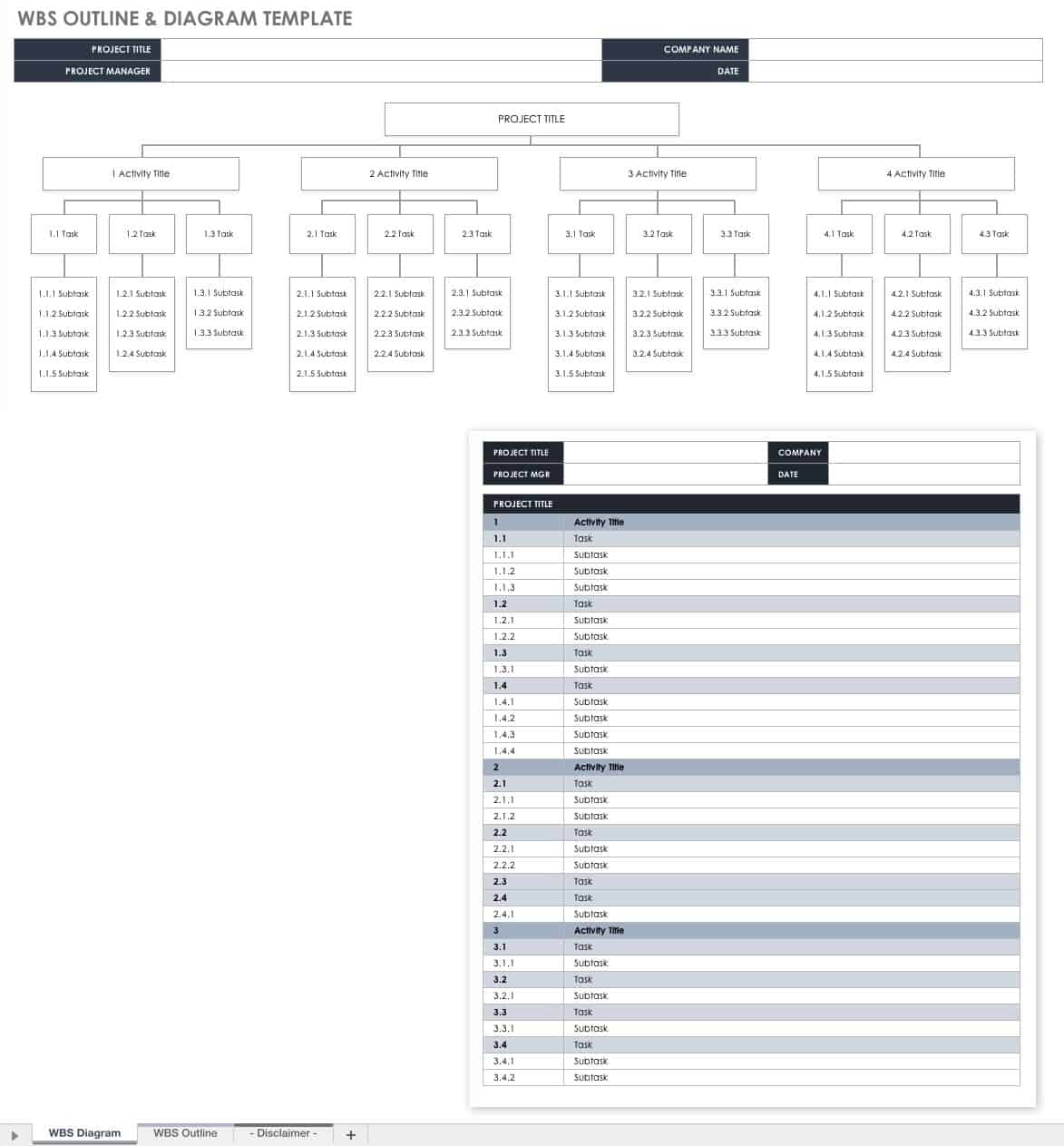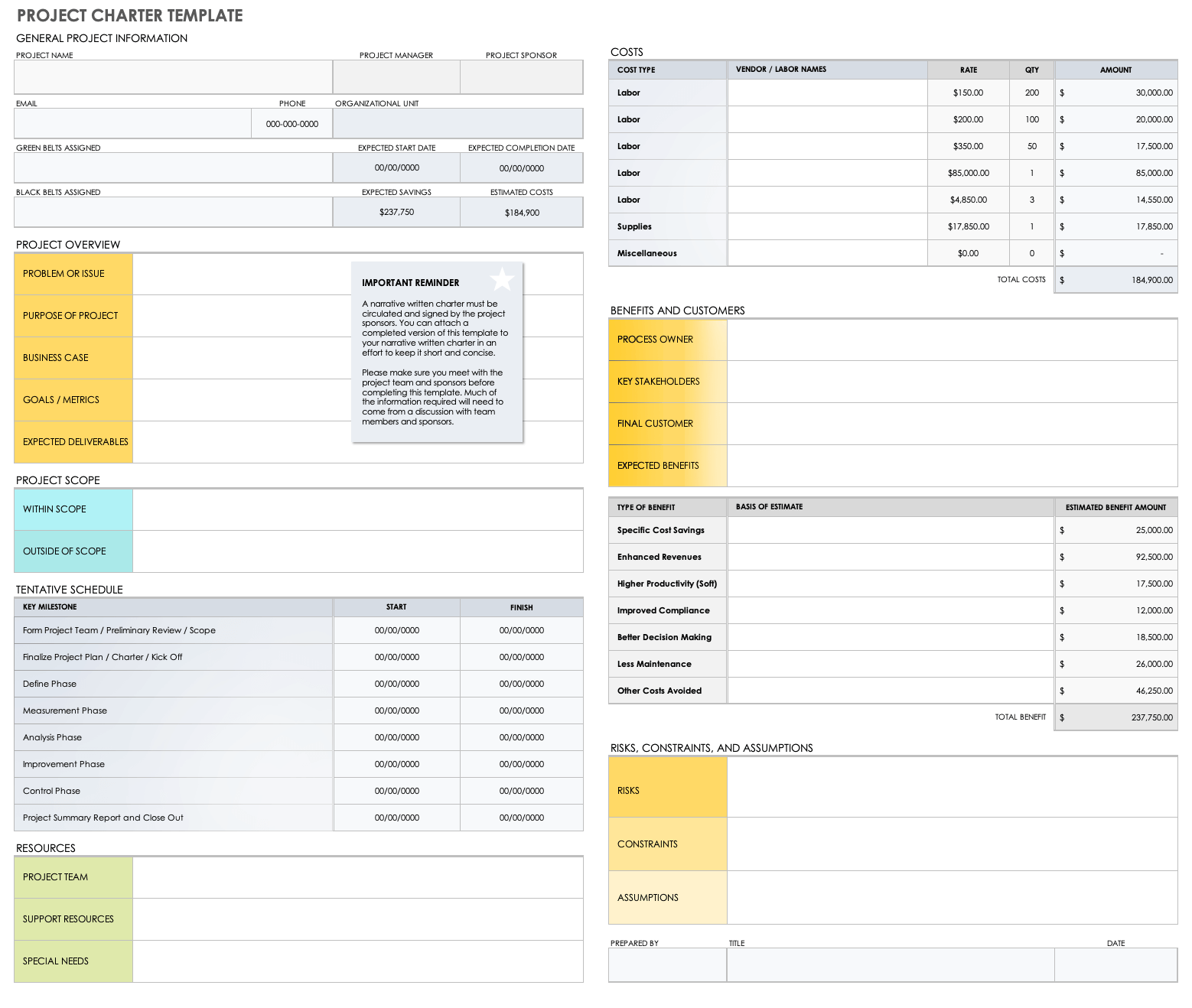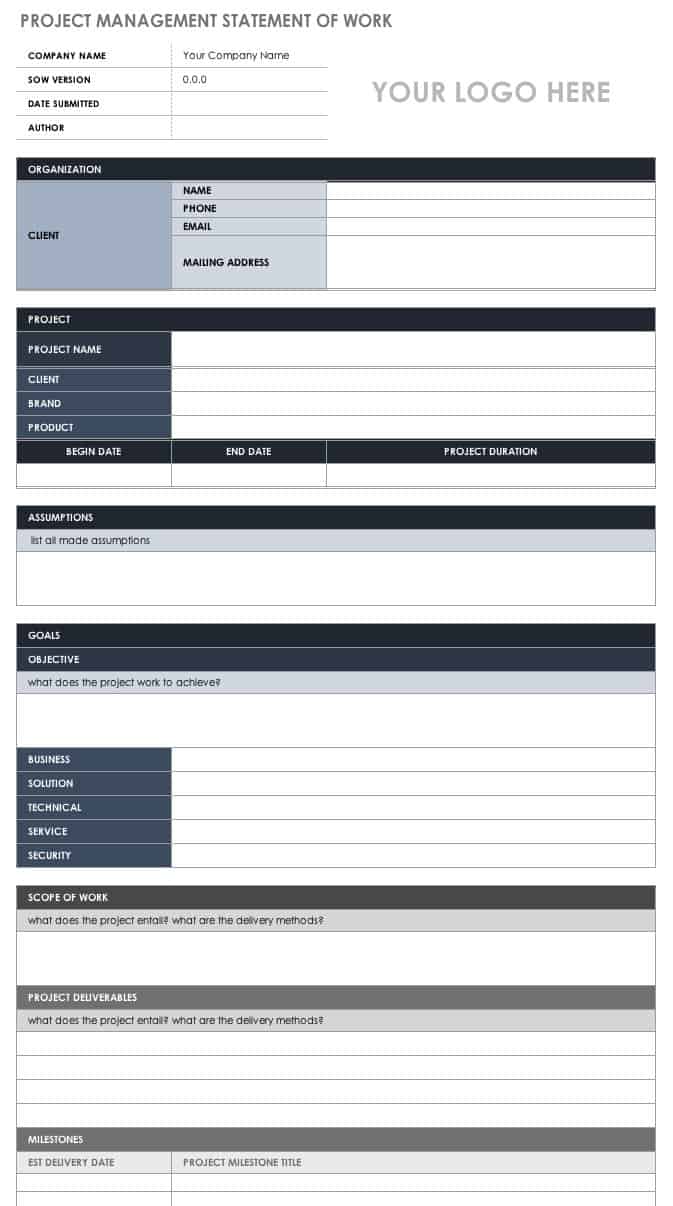What Is Project Scope?
According to the text, A Guide to the Project Management Book of Knowledge (PMBOK® Guide) produced by the Project Management Institute (PMI), “Project scope is the work required to output a project’s deliverable.” Essentially, project scope is the phase of project planning in which you identify the project’s goals, deliverables, budget, and schedule. Note that project scope is not to be confused with product scope. Though similar in intent, product scope defines the necessary deliverables and constraints of a product, rather than of a project.
While both project and product requirements can change over time, the goal is to avoid scope creep, which is the unplanned or unmanaged ballooning of expectations. When left uncontrolled, scope creep can result in cost overruns, delays, and reduced quality. It can also lead to a loss of trust, a tarnished reputation, or project failure. While there are many ways to mitigate against scope creep, taking the time define your project or product scope can go a long way toward ensuring that you have the proper resources, schedule, and budget to complete your endeavor as planned.
Project Management Guide
Your one-stop shop for everything project management

Ready to get more out of your project management efforts? Visit our comprehensive project management guide for tips, best practices, and free resources to manage your work more effectively.
How Do You Define the Scope of a Project?
Defining the scope of a project means identifying your project’s purpose and deliverables as well as the resources that you need to execute your task(s). In the process of defining project scope, you’ll also determine what is out of scope — that is, what your project is not responsible for. You may have to work with team members, management, or external stakeholders to do so, but the goal of defining project scope is to level expectations among all parties. So, be thorough in your estimations, and take as long as you need to ensure that everybody is on the same page.
In defining the scope of your project, you will determine project objectives, deliverables, constraints, assumptions, exclusions, schedule, and budget, among other items.
PMI outlines six phases of defining scope, and you can use its formula to determine the above criteria for yourself. You will then formally document these items in a project scope statement (detailed in the next section).
-
Planning Scope: In this stage, you decide how scope will be defined, monitored, and controlled. In addition, you define the processes of scope management: how stakeholder expectations will be managed, disagreements will be resolved, and requirements will be prioritized. This first step is critical because it sets the stage and integrity of your entire project operation.
-
Controlling Scope: In this ongoing phase, you manage stakeholder expectations. In general, you should act in the customer’s favor, but you must be realistic and responsible when accepting changes from the client. You must continually assess additional requirements and how they stack up against the baseline scope and decide whether or not to accept changes. Ultimately, the goal of this phase is to avoid unnecessary scope creep.
-
Collecting Requirements: This is the crux of your project scope. In this phase, you define the project’s requirement (any condition or feature that must be met or possessed by your deliverable). At this time, you also define project strategy and work to understand project objectives, constraints, tasks/subtasks, phases/subphases, assumptions, exclusions, milestones, known risk, justification, cost estimate, tools, and technology needed to carry out your project. In addition, you assign a project sponsor, identify stakeholders, and define acceptance criteria.
-
Defining Scope: Now that you have collected all the requirements, you can formally define your proposed project scope — including what is out of scope. In this phase, you write the scope statement (defined in detail in the next section): List your project deliverables, constraints, assumptions, exclusions, budget, schedule, approval requirements, etc. It is also appropriate to include alternatives to budget and/or schedule if proposed benchmarks cannot be met.
-
Creating Work Breakdown Structure (WBS): A work breakdown structure deconstructs the broad project scope into a hierarchical structure of the smallest discrete action items (called work packages). This is both a crucial step and a deliverable that will help your team understand the tangible work to be done and delegate the work packages to appropriate parties.
You can view your work packages in both outline and diagram form with this WBS template for Microsoft Excel. The visual representation makes it easy for stakeholders to see how work packages are organized and relate to each other, and you can customize the fields to fit your needs.
Download WBS Outline and Diagram Template - Excel
You can find more work breakdown structure templates here.
-
Validating Scope: In this phase (also called scope verification), external stakeholders (customers) formally sign off on deliverables. Keep in mind that you still have control over your output, so don’t blindly accept changes that the customer proposes.
In the following sections, we’ll describe the phases of defining project scope in detail and show how to formally document this information in a project scope statement.
What Is a Project Scope Statement?
A project scope statement is a document that outlines your project scope. It serves as a formal record of proposed deliverables, schedule, cost, resources, etc., so that all stakeholders align their expectations.
Project scope statements are similar but not identical to the following project planning documents. Below, we provide some context on each type of document and include free, downloadable templates to help you get started in your project planning.
-
Project Management Plan (PMP): This document will likely have some overlap with a scope statement, but a PMP is more focused on project objectives and overall execution. In contrast, a scope statement defines the specific boundaries and requirements of a project.
-
Project Charter: A project charter outlines a project’s goals and intentions, often in relation to overall business decisions. Teams consult the project charter during production to ensure that business decisions are in line with the initial intent of the project. You can use this project charter template for Excel to list the project purpose, business case, goals, metrics, expected deliverables, and tentative schedule.
Download Project Charter Template
Excel | Word | Smartsheet
-
Statement of Work (SOW): The SOW describes the working agreement between two parties and is used to ensure that all agreements are met in the final deliverable. A statement of work will usually include project scope, but goes further to outline the expected outcomes and additional terms and conditions. This SOW template includes space to describe project objectives and assumptions, as well as business, solution, technical, service, and security aspects to the project. You can find additional, industry-specific SOW templates here.
Download Project Management Statement of Work
-
Joint Application Design (JAD): JAD is a process in which knowledge and IT professionals define the business requirements of a development project. JAD is usually facilitated through a formal workshop that seeks to resolve any miscommunications between parties and mediate the business requirements with the technical constraints. Participants usually include the executive sponsor, the subject matter experts, a recorder (also called a scribe or documentation expert), a facilitator, and other team members who wish to observe the workshop. The result of a JAD can resemble a scope statement in that formal expectations are set.
How to Create a Project Scope Statement
A project scope statement is a relatively straightforward document, but you should spend adequate time researching and finalizing it, as it will serve as the primary reference for project or product expectations.
At minimum, a project scope statement should include the following:
-
Project objectives and goals
-
Key deliverables
-
Project constraints
-
Project assumptions and exclusions
-
A rough timeline or schedule
-
A budget
-
Relation to overall business objectives (how your project aligns with organizational pursuits)
-
Stakeholder approval
You can use the following Microsoft Word template to write your scope statement. In addition to the elements listed above, it includes space to list tasks that are out of scope, to attach a WBS, and to describe budget and timeline as project constraints.
What Is Scope Management?
The PMI describes the process of scope management during a project’s lifecycle: “Change happens, and project scope management includes the process to manage scope changes and make sure the project will still come in on time and within budget.” In the business world, this means you’ll need to actively monitor scope over the course of your project or through product development, even though you’ve defined your project scope and created a scope statement. Scope management defines how to continually tend to and control scope to avoid cost overruns and delays.
Effective scope management offers several benefits, but the biggest plus is avoiding scope creep. To do so, you’ll need an accurate estimation of both time and cost — if you can handle these two concerns, you’ll have a greater chance of executing a project or product that delivers the planned value and meets objectives. Effectively managing scope also helps ensure continued buy-in from stakeholders and can aid in building trust with customers. In addition, scope management can improve project or product quality and earn managers a reputation as accountable, reliable team members and leaders.
On the other hand, poorly managed scope often results in scope creep, which can manifest as late projects, cost overrun, or low quality. Ultimately, lack of or poor project scope management can lead to stress and failure.
Project scope management is often discussed in conjunction with the following:
-
Change Management: Change management is the proactive identification and implementation of change and development within a company. There are several different models of change management, but the term itself refers to the collective actions taken to ease organizational adjustments. Effective scope management includes change management, as requirements, budget, and schedule inevitably shift over the course of a project. However, you must be smart about how you identify and communicate changes to stakeholders — you shouldn’t simply approve or reject actions without sign-off from all involved parties. Furthermore, the term integrated change management refers to the goal of simultaneous integration between organizational and individual change and between project and change management.
-
Project Portfolio Management (PPM): PPM is a management strategy that helps evaluate and prioritize multiple projects in a portfolio. If you have properly detailed the scope of every project, prioritizing them becomes much easier.
Project Scope Management Best Practices
By nature, scope management is an inexact science: You cannot anticipate every change or development that will challenge your project’s timeline or budget. However, you can follow several best practices to help maximize your chances of project success:
-
Be specific and accurate. The more accurate your projections, the lower the chance of scope creep. Avoid ambiguity, address uncertainties, and act early if you have questions.
-
Create high-level objectives. Keep objectives at a high level to build flexibility into your project plan. Use language that describes the overarching intent of the project or product (PMI recommends verbs like replace, design, implement, install, and automate), and provide concrete specifications in the other sections of your scope statement.
-
Collaborate. Work with everyone who depends on your project’s success — both inside and outside your organization. This will help you clarify expectations from the outset.
-
Involve the correct stakeholders. Equally as important as communication is communication with the right people. Only involve the necessary parties. This will help negotiations go as smoothly and as quickly as possible.
-
Take potential changes into account. As discussed, changes are inevitable over the course of a project. Keep this in mind throughout production, and be open to change — but only after careful consideration and calculations.
-
Solicit approval from stakeholders. Remember that your stakeholders depend on your project’s successful on-time and on-budget completion. Though you should remain open to change, as the team leader it’s your responsibility to communicate changes to and solicit approval from stakeholders before changes are implemented.
-
Watch out for “gold plating.” Gold plating occurs when team members tack on additional project or product features to wow customers or clients. While going above and beyond can potentially strengthen a client relationship, it can often backfire and cost both parties more time and money. (Gold plating is often considered a version of scope creep.)
Below are additional tangible techniques you can use to make sure that you don’t overlook any factors in either your scope statement and scope management plan. If you choose to include extra documentation, be sure to keep it clear, straightforward, and to the point so that you don’t confuse stakeholders or create more work.
-
Create SMART goals. Learn more about writing SMART (smart, measurable, achievable, relevant, time bound) goals here.
-
Use a mind map to create your scope statement: A mind map is a visual display of information. It’s often used in brainstorming sessions to track your thoughts and see how they are related. You can use a mind map to generate ideas when drafting your scope statement, but you can also employ the technique to identify hierarchical relationships among your project requirements. There is even mind mapping software that allows you to retract or extend “branches” of your brainstorm, depending on the audience.
-
Include a SWOT analysis: Analyze your project through the four SWOT (strengths, weaknesses, opportunities, threats) lenses to identify room for improvement and influences that could present difficulty or force changes to your project.
One way to gain credibility in the field of scope management is to pursue a Project Management Professional (PMP)® Certification through PMI. For extensive information on studying for and obtaining the PMP, read “Boost Your Career with PMP Certification.”
Avoid Scope Creep with Smartsheet for Project Management
From simple task management and project planning to complex resource and portfolio management, Smartsheet helps you improve collaboration and increase work velocity -- empowering you to get more done.
The Smartsheet platform makes it easy to plan, capture, manage, and report on work from anywhere, helping your team be more effective and get more done. Report on key metrics and get real-time visibility into work as it happens with roll-up reports, dashboards, and automated workflows built to keep your team connected and informed.
When teams have clarity into the work getting done, there’s no telling how much more they can accomplish in the same amount of time. Try Smartsheet for free, today.



